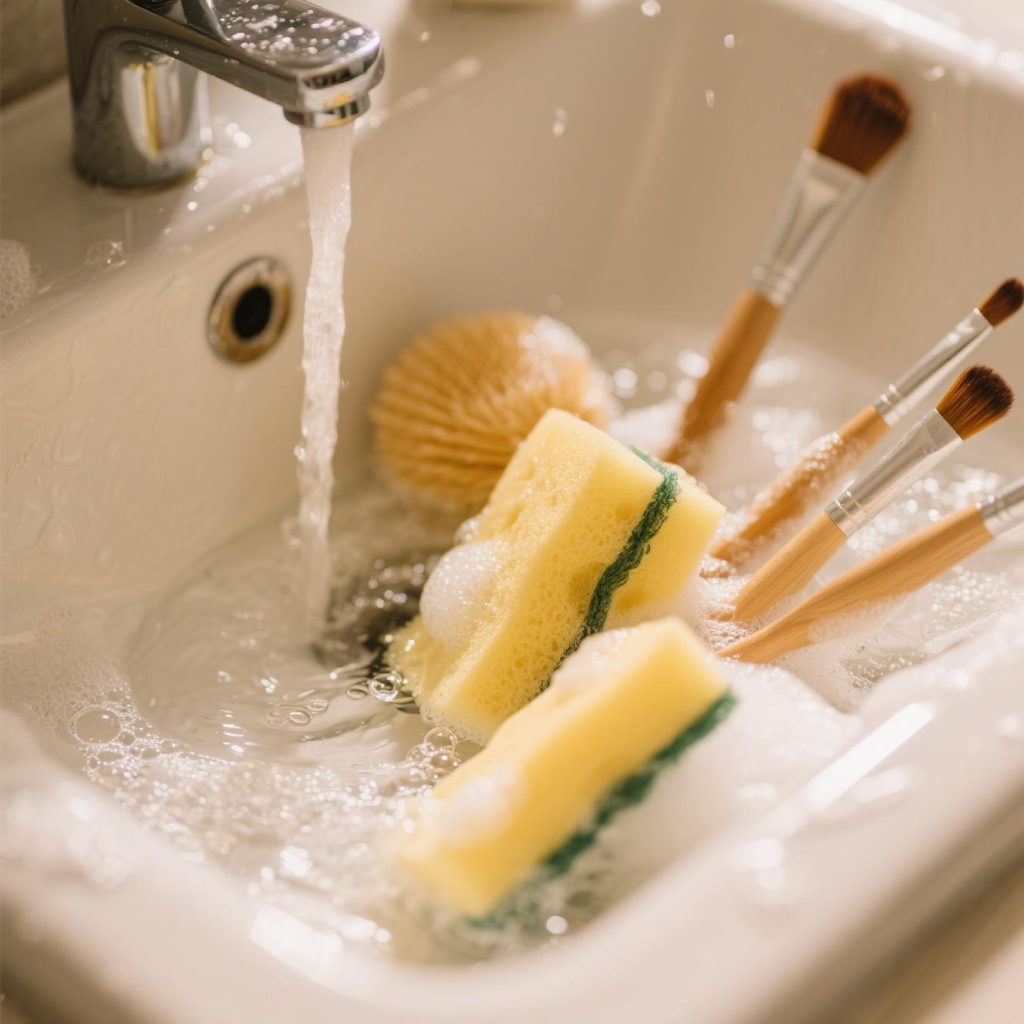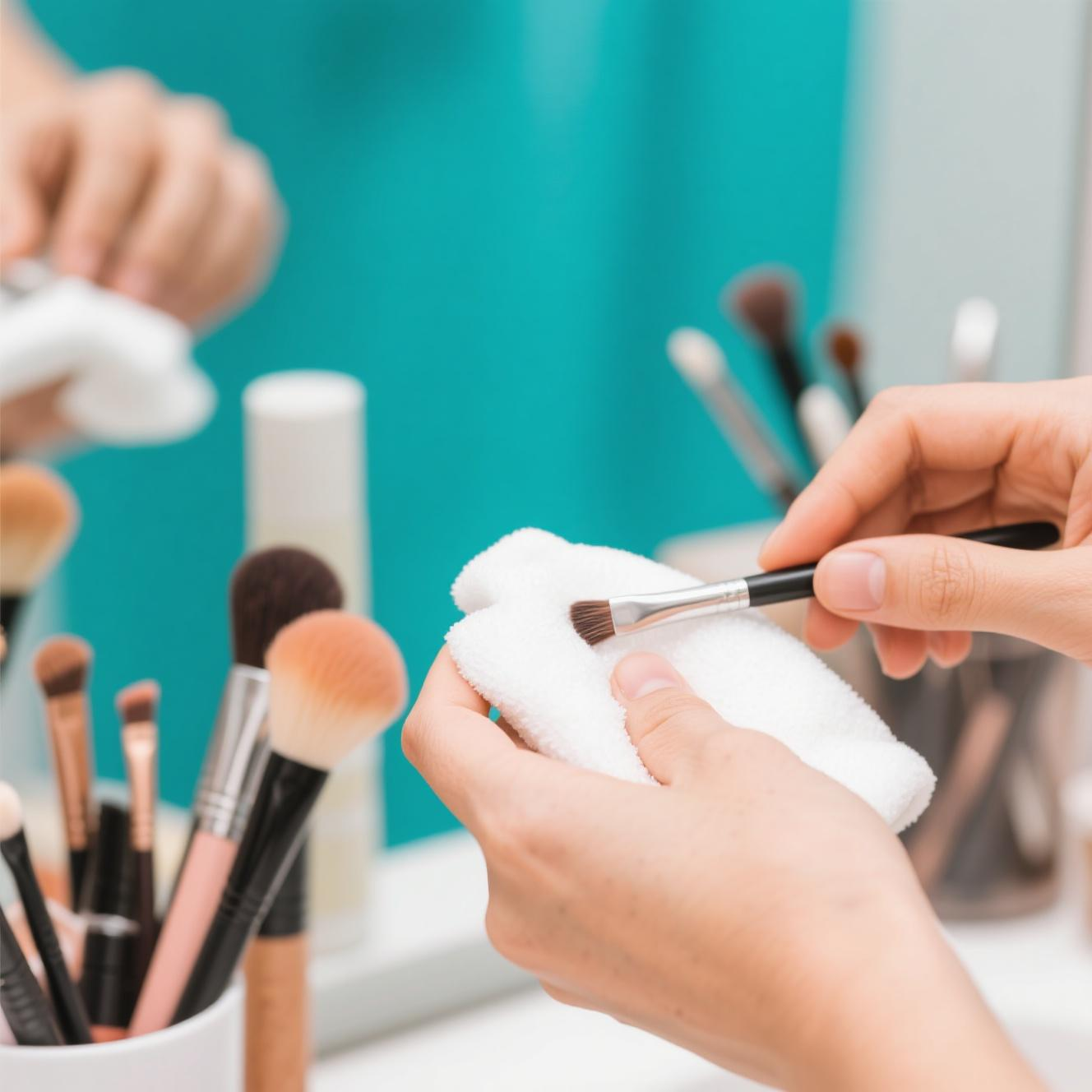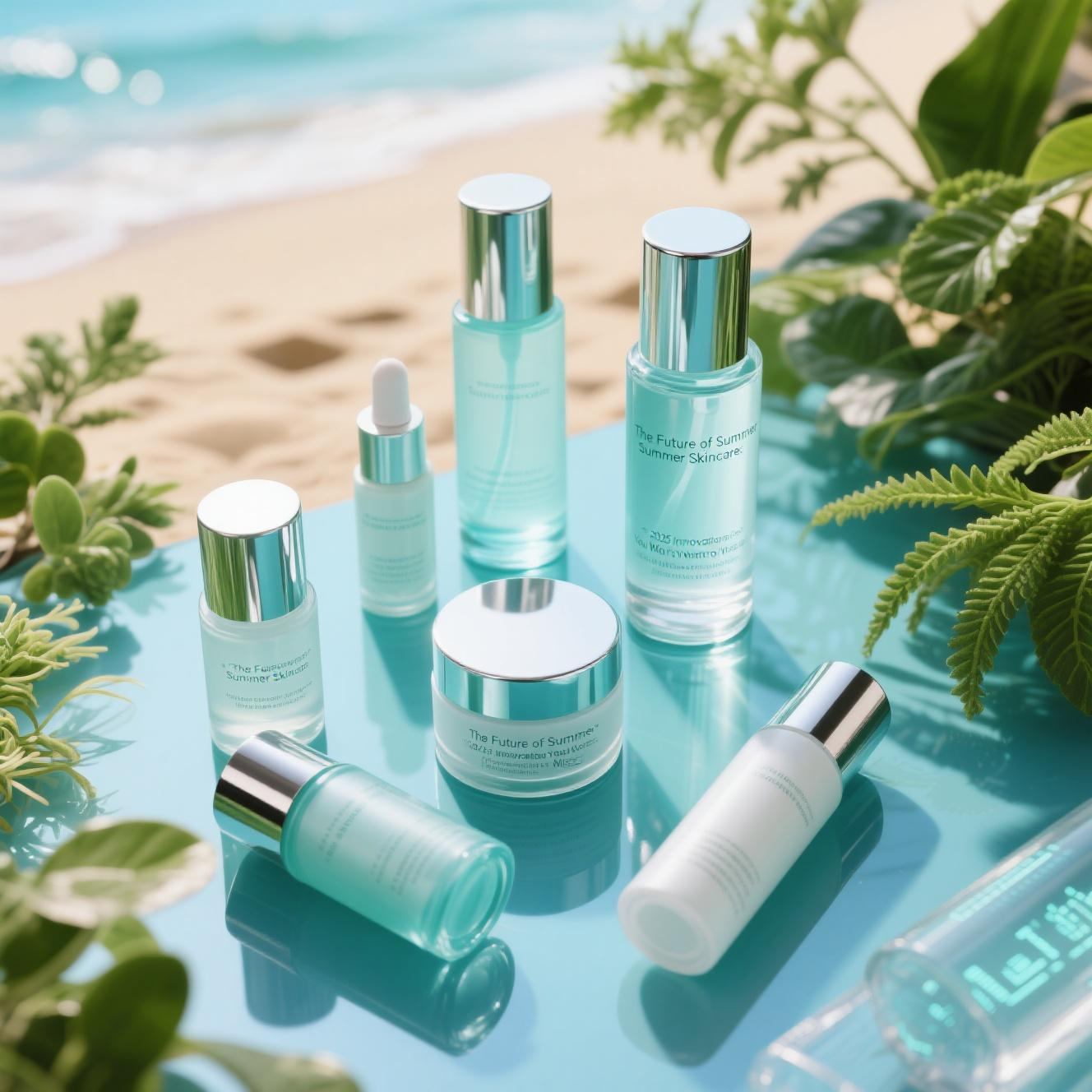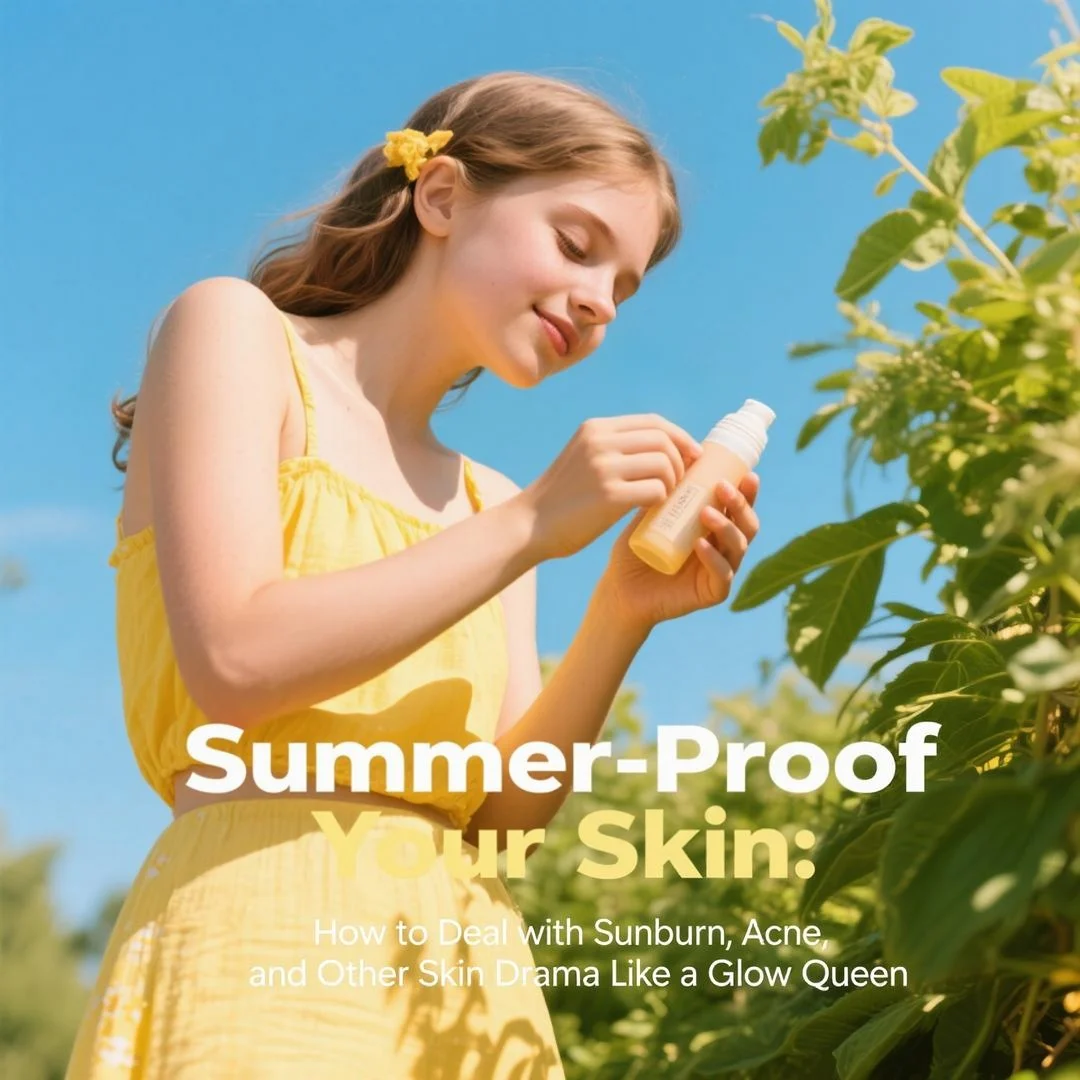There’s a certain lightness that comes with summer—the way we swap heavy coats for airy dresses, switch out moody makeup for dewy skin, and ditch dark lipsticks for peachy glosses. But hidden behind the glow-up is a seasonal skincare saboteur that too many people ignore: dirty makeup tools. As the temperature climbs and humidity takes over, even the most flawless foundation can’t hide the effects of clogged brushes and sponges. And while you might be switching to oil-free moisturizers or non-comedogenic sunscreen, if your makeup tools are harboring bacteria, your efforts might be in vain.
I learned this the hard way during a particularly hot July in Miami. I had just purchased a new bronzer—one of those buttery formulas everyone raves about—and was thrilled to give my cheeks that golden vacation glow. But within a week, I had a sudden flare-up of tiny breakouts across my cheeks and jawline. I blamed the bronzer. I blamed my SPF. I even blamed the pillowcases in my Airbnb. It wasn’t until I washed my favorite blending brush—something I hadn’t done in weeks—that I realized the true culprit. The amount of murky beige water that came out was enough to make me cringe 😖
In warm weather, our skin produces more oil, we sweat more, and we touch our faces often. That combination alone is risky, but when your tools are already contaminated with leftover product, skin oils, and microscopic bacteria, the chances of triggering breakouts skyrocket. This is especially important for acne-prone skin or those with sensitive complexions. Makeup brush hygiene isn’t just a best practice—it’s skincare. And in the summer months, it’s skincare amplified.
Most people don’t realize that dirty makeup brushes cause acne, and it doesn’t take a microscope to prove it. You can feel it—when your once-soft kabuki brush starts to stiffen, or when your beauty sponge takes on a faint scent that’s not quite your cleanser. It’s a quiet buildup that sneaks up on you. Between melting foundation, reapplications, and sweat mixing into your highlighter, your tools can become a petri dish faster than you think. Cleaning them regularly during summer isn’t about being a neat freak—it’s about keeping your skin safe.
I have a friend, Tara, who works outdoors most of the summer as a stylist for wedding shoots. She’s always in the sun, always running around, and yet her skin is somehow flawless. Her secret? She washes her brushes at least twice a week, and she swears by using a fragrance-free baby shampoo with a little olive oil for deep cleansing. “It’s therapeutic,” she told me once as she lathered her brushes over a little silicon mat in her sink. “Plus, it saves me from breakouts during shoots.” Her kit is minimalist—she doesn’t carry 30 brushes—but every one she does use is immaculate. That level of care isn’t just professional. It’s personal.
Now, let’s talk tools. Beauty blenders, synthetic brushes, natural hair bristles, and even sponge-tip eyeshadow applicators all require different levels of attention. In summer, it’s not just the visible grime you’re fighting—it’s mold, yeast, and bacteria that thrive in damp environments. Leaving a damp sponge in a closed container after a morning routine is basically giving it a spa day for mold growth. I’ve seen people open their travel bags only to find a beauty sponge speckled with dark spots. Not only is that gross, it’s dangerous for your skin barrier.
One of the most overlooked items in many kits is the brow brush. People fill in their brows every day and rarely, if ever, wash that tiny angled brush or spoolie. But oils from the skin, leftover pomade, and dust from makeup bags accumulate. A client of mine once had a recurring red patch under one brow that wouldn’t go away. She thought it was an allergic reaction. It was her brow brush. After a thorough wash and a bit of healing, it never came back.
Deep-cleaning makeup brushes doesn’t have to be a chore. With the right technique, it can be soothing. The act of swirling your brush into warm water, seeing product rinse away, and reshaping the bristles feels almost meditative. Use lukewarm water—not hot, as heat can loosen the glue holding the bristles. A gentle cleanser, especially one with antibacterial properties, works best. There are also brush cleansing balms and solid soaps made specifically for this purpose, which are excellent for travel or quick washes. Drying the tools is just as critical. Lay them flat on a clean towel, never upright, to prevent moisture from dripping into the ferrule, which can cause shedding or damage over time.
During summer trips, I keep a travel-size bottle of micellar water and a microfiber cloth for on-the-go tool cleaning. It’s not a deep clean, but it works in a pinch—especially if I’m switching shades or going from a matte to shimmer look. I’ve used hotel hand soap and even gentle shampoo in emergencies, but nothing beats a routine. Like brushing your teeth or taking off your makeup at night, cleaning your tools should be non-negotiable 🧼
There’s a common myth that only brushes used for cream or liquid products need regular cleaning. But powder brushes are just as susceptible to buildup. Bronzer, blush, and setting powder can all mix with skin oils and become a breeding ground for bacteria. In the height of summer, even eyeshadow brushes that come in contact with sunscreen-slicked skin can carry traces of grime that lead to clogged pores.

Storage plays a role too. It doesn’t matter how clean your brush is if you’re storing it in a makeup bag with open lids, leaky lipsticks, or loose powders. I’ve started wrapping freshly cleaned brushes in paper towels or keeping them in breathable mesh sleeves until they’re fully dry and safe to store. On extra humid days, I even let them dry under a fan to prevent moisture from lingering in dense bristles.
And let’s not forget about your hands. We wash our hands before eating, but how often do we wash them before applying foundation or eyeshadow? If you’re using your fingers to blend concealer, you’re transferring whatever was on your phone, keyboard, or steering wheel onto your skin. During summer, when oil production is high and bacteria multiply faster, even clean tools can be contaminated by unwashed hands. So make hand hygiene in makeup routines part of your ritual—it’s a tiny habit with big impact.
Even the most luxurious makeup loses its magic when applied with dirty tools. I once watched a friend excitedly unbox a high-end foundation she’d saved up for, only to apply it with a sponge that hadn’t been cleaned in weeks. The texture looked patchy, and the finish didn’t live up to its promise. A few days later, she cleaned the sponge and tried again. The glow was flawless. Sometimes the problem isn’t the product—it’s the application.
As with most beauty rituals, consistency beats perfection. You don’t need to clean every brush every day, but being aware of how much you use them and how often they touch your face can help you find a rhythm. I now have a Sunday ritual where I clean my most-used brushes while listening to a podcast or catching up on my favorite reality shows. It’s oddly satisfying to see the clean bristles dry by the window, knowing they’ll treat my skin kindly in the week ahead ☀️
Summer has its skincare challenges, but many of them are preventable. Staying hydrated, using the right SPF, and cleaning your tools regularly form a trio of habits that keep your skin looking fresh. And the next time you’re tempted to blame a new product for that stubborn breakout on your cheek, consider the last time you washed your tools. Sometimes, the solution is already in your sink.




